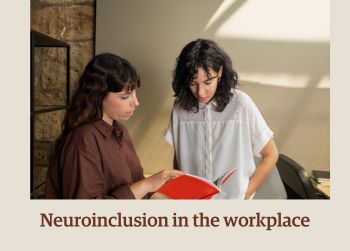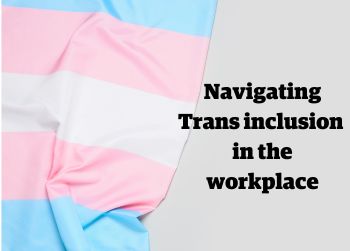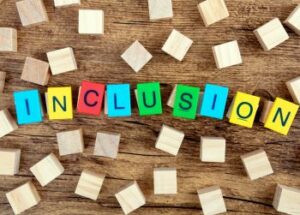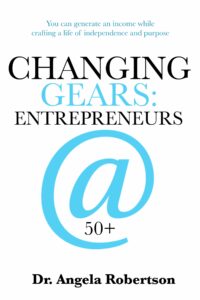Neuroinclusion in the Workplace
It’s not just the right thing to do, it’s the smart thing to do.
Neurodiversity is a hot topic at the moment, but what is it? Below are some quick definitions to bring readers up to speed.

Neurodiversity: This is an umbrella term that describes the range of differences in brain wiring, functioning, and behavioural traits – regarded as being a normal part of the variation of the human population. All brains are wired differently!
Neurotypical: Describes people with typical or common brain functioning. This doesn’t mean better, it just means more commonly occurring.
Neurodiverse and Neurodivergent: Both terms refer to people who are not neurotypical. This can be people whose brains are wired differently, which means they process, think, behave, and/or act different to what is considered typical.
It is important to remember that differences should not be viewed as deficits. Differences enhance a workplace, provided the workplaces are inclusive and accessible for all.
“But it’s hard to be inclusive of everyone”
Neurodiversity is good for everyone, not just neurodivergent people. There are neurotypical people that would also benefit from the recommendations shared in this article. People who feel supported and included in their workplace are more likely to stay and be consistent high performers.
Creating neuroinclusive workplaces is not just the right thing to do, it’s a smart business decision.
Neurodivergence is more common than we might think. Formal statistics of diagnosed people sit around 20-25%₁, however there is research acknowledging the various barriers someone might face for diagnosis means that an estimated 30-40%₂ of the general population are neurodivergent.
So what can I do?
There are many easy tweaks we, whether managers or colleagues, can do to make workplaces neuroinclusive.
Be mindful of the language we use and the environments we create
Sometimes the things we say, particularly about neurodiversity, can make people feel unsafe about sharing this part of their identity with others or ask for reasonable accommodations.
Get to know people
People are their own best experts. They often know what they need or how they best work. Create opportunity for them to share this with you as their colleague or manager.
Normalise individualised ways of working
Enable everyone to work in a way that is going to bring them the most successful outcomes at work. This might be:
*ensuring assistive technologies are available on work devices,
*giving people flexibility around where or when they work,
*providing a variety of work stations within an office space,
*create office zones for the quiet and louder workers in an open plan set up,
*encourage movement and use of sensory items during hui and throughout the work day.

Work to someone’s strengths
No one is good at everything, but everyone is good at something. Hire people for their strengths and utilise them.
Encourage break and leave taking culture
The work will always be there, and productivity will always boost after a break. Often it is our managers and leaders that need to model that taking a break and taking leave is not only okay, but it is essential.
People who are burned out are not going to be top performers.
Provide feedback for work well done
It is so easy in our fast-moving world to only tell people the things they have done wrong or need to change. It’s really important that we provide positive feedback, so people know what mahi they do well and are encouraged to continue doing it. It is also important from a wellbeing perspective for people to have balance in the feedback they receive and to make them feel valued.

Offer communication in a variety of methods
Everyone processes information differently. If you are communicating with one person, check in with them what works best for them. If you are communicating one message to multiple people, communicate this in multiple ways – verbally, written, individually, a group setting.
Think about the accessibility of our written communication
There are so many ways of making our written communication more accessible, however some quick tips:
*Size 12 sans serif font.
*Use simple and concise language.
*Utilise bolding for headings and key points.
*Avoid long paragraphs, break things into smaller paragraphs or use bullet points.
*Always have dark text on a light background – never white text on a dark background.

Form or support a neurodiversity or disability network
Employee Led Networks can help people to feel a sense of belonging and connection at work with others who share similar lived experiences. It can help people less alone and empower people to ask for they need.
Continue learning about neurodiversity
With neurodiversity being a popular topic right now, there are plenty of resources, webinars, seminars, and education available. There is plenty more information around neuroinclusive workplaces, recruitment, and leadership out there!
₁ https://umbrella.org.nz/neurodiversity-in-workplace/
₂ https://www.medicalnewstoday.com/articles/what-does-neurotypical-mean#neurodivergent
About Amber Rowe:
Amber is neurodivergent and has completed studies in psychology and human development. She works as Senior Adviser Inclusion and Diversity for Ara Poutama Aotearoa – Department of Corrections. She is the chair for the Corrections employee-led national Neurodiversity Network and has created a nationally delivered learning package on neuroinclusive practice and workplaces. She has worked for the department for six years and previously worked for eight years in the disability sector, working primarily with neurodivergent youth and young adults.
Click here to find Amber on LinkedIn, feel free to get in touch if you have any questions or would like to discuss this more.

Further reading
by Ludmila N. Praslova, HBR.org. August 15, 2023
Organizations designed to support neurodivergent and disabled employees demonstrate how work can “fit” people — not the other way around. (Accessible with WCL log in).
Neurodiversity at Work Season 5, Episode 8 The Anxious Achiever / HBR podcast
A deeper look at the experiences of neurodiverse professionals at work.
The neurodiverse workplace : an employer’s guide to managing and working with neurodivergent employees, clients and customers / Honeybourne, Victoria
“Comprehensive guide to supporting neurodiversity in the workplace. Up to 20% of employees are neurodivergent, and employers need guidance on how to accommodate these variations successfully. Includes advice on recruitment, physical environments and how to interact with neurodivergent individuals to benefit these capable members of the workforce.” (Catalogue)
The pocket guide to neurodiversity / Aherne, Daniel
“At least one in seven people are thought to be neurodivergent. So what exactly is neurodiversity? What does ‘executive functioning’ mean? What are ‘spiky profiles’? In this simple guide, expert speaker and trainer Daniel Aherne provides a clear introduction to neurodiversity and the four most common neurodivergent identities of autism, ADHD, dyslexia and dyspraxia. Using an analogy of a cactus needing a desert to grow in, he emphasises the importance of getting the environment right for neurodivergent people, rather than expecting them to adapt to the neurotypical world … Busting common misconceptions and setting out simple tips and guidance for supporting the neurodivergent people around you, whether among your family, friends or at your school, college or workplace …” (Adapted from Catalogue)
We’re all neurodiverse : how to build a neurodiversity-affirming future and challenge neuronormativity / Wise, Sonny Jane
“Radical, accepting and kind. This is the neurodiversity paradigm. This guide challenges your assumptions of who is and isn’t neurodivergent with own voice narratives reflecting on intersections of race, gender and sexuality and directly opposes the pathology paradigm. At its heart, it is a rallying cry to be a neurodiversity affirming society”– Provided by publisher.” (Catalogue)
Unmasked : the ultimate guide to ADHD, autism and neurodivergence / Middleton, Ellie
“The go-to book on neurodivergence for anyone looking for a diagnosis, trying to make sense of one, or trying to be a better ally. In 2021 Ellie was diagnosed with autism and ADHD… 80% of autistic females remain undiagnosed at age 18 and only 8% of adults affected by ADHD have a formal diagnosis. Even with a diagnosis, most are left asking, what now? Ellie’s mission is to change that. To challenge the common misconceptions about neurodivergent conditions that are preventing marginalised people get the diagnosis they need, and to provide simple, actionable resources so that they can live without the fear and shame that she did…” (Adapted from Catalogue)
Seeing what others cannot see : the hidden advantages of visual thinkers and differently wired brains / West, Thomas G.
“For over 25 years, Thomas G. West has been a leading advocate for the importance of visual thinking, visual technologies and the creative potential of individuals with dyslexia and other learning differences. In this new book, he investigates how different kinds of brains and different ways of thinking can help to make discoveries and solve problems in innovative and unexpected ways. West focuses on what he has learned over the years from a group of extraordinarily creative, intelligent, and interesting people — those with dyslexia, Asperger’s syndrome, and other different ways of thinking, learning, and working. He shows that such people can provide important insights missed by experts as they also can prevent institutional “group think.” … ” (Adapted from Catalogue)
If you would like further information please contact the Prosearch team at the library. We can help you find information across a range of perspectives and resources. All enquiries are treated in confidence.







